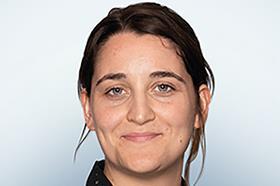There are three core pillars we use to explain how to make working environments more welcoming by being ‘neuroinclusive’. These are ‘place’, ‘people’ and ‘process’. Process was the focus of a previous article (14 June) – here we look at place, meaning the physical working environment. This encompasses both the workspace and equipment.


Place is a core pillar because many people in legal services work for long periods in singular locations – usually (but not always) office buildings. Office environments can exacerbate the sensory processing issues that are the intrinsic experience of many neurodivergent people.
Sensory stimuli that a ‘neurotypical’ person may experience as mildly irritating or against their preference can be physically upsetting, uncomfortable or overwhelming for a neurodivergent individual. This is exacerbated when experienced in combination.
One neurodivergent colleague explained their experience of dealing with sensory challenges: ‘For me, noise is a very big trigger. When I was studying for the SQE, I used to avoid going to the bathroom between classes when it was busy because I found the hand dryers so loud that I wouldn’t be able to stay in the bathroom. Luckily, the office has paper towels, so this isn’t an issue anymore.
‘Nowadays, I have found ways to better cope with my sensory issues at the office. I have requested to sit away from high-traffic areas (as background chatter/typing is a huge distraction), and I wear noise-cancelling headphones when noise becomes overwhelming. I also love attending firm social events, but I know the noise level can be difficult so I always carry earplugs.
‘There are still difficult days. For example, I struggle with sirens, so if an ambulance passes me on the way to work it can stress me out and throw me off. When that happens, I try to take time in the office to just breathe and physically “shake off” the sensations. I used to be afraid of being perceived as “antisocial” if I wore headphones around the office, but I’ve learned that no one minds. I’m slowly learning to make my own wellbeing the priority.’
Genuine understanding and accommodation of sensory challenges by employers as part of holistic neuroinclusion needs to be based on the recognition that neurodivergent people can be either sensory-seeking or sensory-avoiding. Often they are a mixture of both (for example, finding some sounds repellent but others soothing).
It also means striving for inclusivity across all eight senses, not just the familiar five most of us are taught as children. Alongside lighting, odours and noise, consideration needs to be given to:
- vestibular factors (awareness of balance, movement, and coordination);
- proprioceptive factors (body awareness and position in the space around us); and
- interoceptive factors (our internal sensory system that tells us what is happening inside our body – for example, hunger, fatigue, temperature and emotions).
The relatively new concept of ‘inclusive design’ is defined as the process by which an environment (or product) is planned to be as usable for as many people as possible. It particularly applies to those groups (such as the disabled and neurodivergent) who are traditionally excluded from being able to navigate such a setting.
Helpfully, there is a comprehensive new architectural standard specifically focused on creating neuroinclusive workspaces. It covers subjects from ‘lighting and acoustics to thermal comfort and wayfinding’. A growing volume of public infrastructure and leisure facilities, from Wembley Stadium to the Royal Albert Hall and Gatwick Airport, offer dedicated sensory rooms and packages to visitors. So it is profoundly encouraging to hear from a growing number of legal services employers that they are factoring this consideration into major office moves or comprehensive refits from the earliest blueprint stage (when it is obviously cheaper to incorporate).
Our Legal Neurodiversity Network ‘recommendations report’ highlights steps to create a workspace that is more supportive of minds that work differently, even where fully inclusive design changes are not possible.
Ideas include clear signage and floorplans, designating quiet and more social zones, and allowing neurodivergent people to select their preferred seat in a ‘hot-desking’ arrangement. As open-plan configurations become more common, encouraging respectful behaviour such as asking colleagues not to eat strong-smelling food at desks and taking longer phone calls away from them is also helpful. There is also a wide range of sensory-assistive equipment that can be provided such as sit-stand desks, rocking chairs and active footstools.
Neuroinclusive accommodation is still feasible in physically or cost-constrained settings. In these locations, it is key to ‘normalise’ rather than stigmatise forms of self-regulation that individuals may adopt to produce a sense of calm: wearing noise-cancelling headphones and using stim toys can be transformative.
A further step is to have a more relaxed attitude to the dress code. And perhaps most obviously, employers should be flexible in not requiring neurodivergent colleagues to be in the office more than strictly necessary to perform their roles when the workspace involved cannot fully accommodate their needs. This is important in the context of employers who are emphasising the cultural and development benefits of ‘back to the office’.
While getting ‘place’ right does not guarantee that all neurodivergent people in an organisation will automatically and always feel fully included, it is one of the more straightforward areas of good practice to address.
Designing a place to be neuroinclusive means that employees with sensory challenges will feel more comfortable and have more capacity to do their job, rather than focusing on the distractions around them. This represents a ‘win-win’ business case for elevating both employee productivity and welfare.
JJ Thompson is projects and campaigns co-lead at the Legal Neurodiversity Network. James Smither is a co-founder, and membership and partnerships co-lead of the LNN





























No comments yet